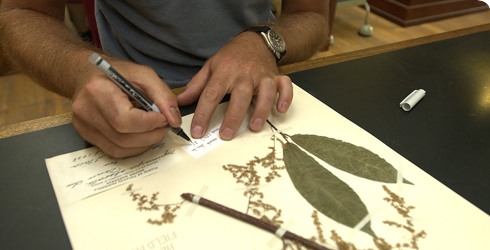Making it part of the collection
Every year, thousands of specimens are collected and brought to the Natural History Museum to be studied, preserved and looked after in the collections. Each specimen that arrives needs to be prepared, identified and labelled.
These videos highlight some of the ways specimens are prepared for our collections, such as plant mounting, pinning and slide preparation.
Many of the specimens are fragile and need to be handled as little as possible, whereas others are unstable and sensitive to changing light and moisture conditions. So specimens are preserved in many different ways. No method will keep every characteristic of an organism in its original state but the aim is to preserve as many of the key features as possible.
-

Preparing a skeleton - secret life of beetles (time-lapse video)
Skeletons are prepared with the help of the Museum's smallest workers, flesh-eating beetles. Watch a time-lapse video of them working on a bird specimen.
-

Plant mounting
Felipe Dominguez-Santana, who works as a herbarium technician at the Museum, talks us through the process of plant mounting in this video.
-

Pinning beetle specimens
Watch Deborah Denovich, scientific preparator at the Museum, as she demonstrates how beetle specimens are prepared before they can go into the collections.
-

Slide preparation
In this video research assistant Zoe Adams explains how specimens are mounted on to slides to be examined under a microscope.
